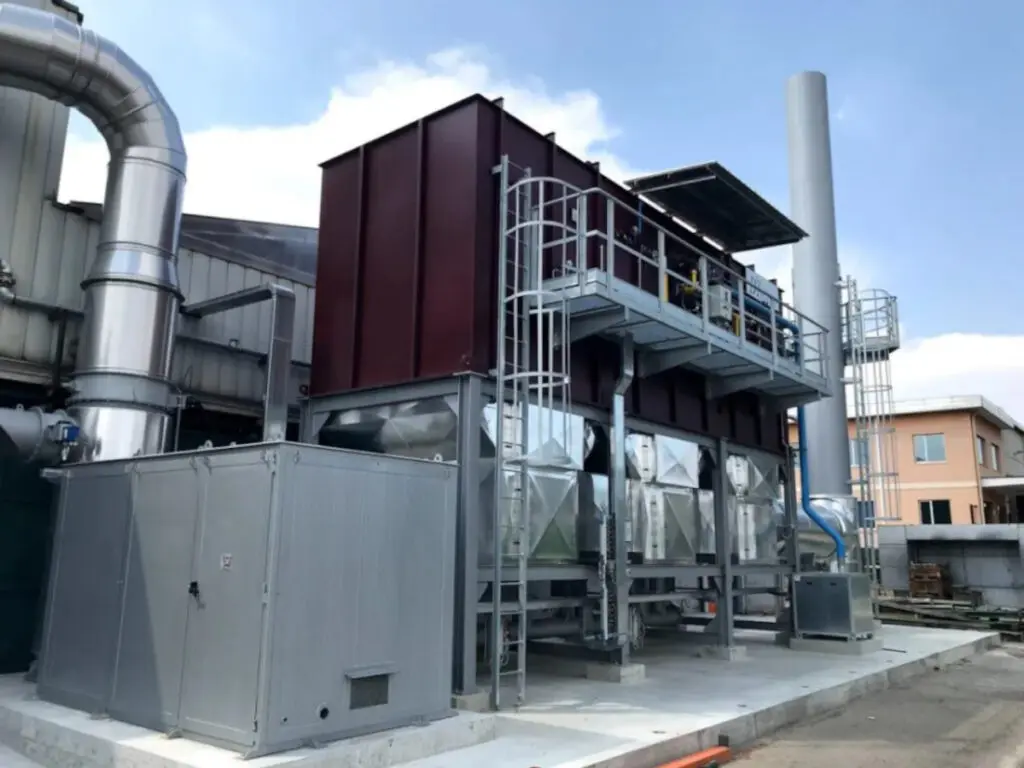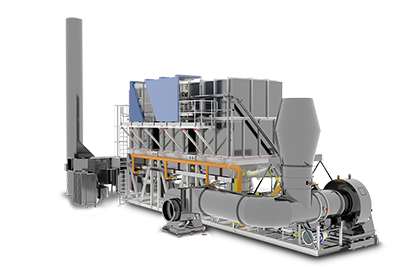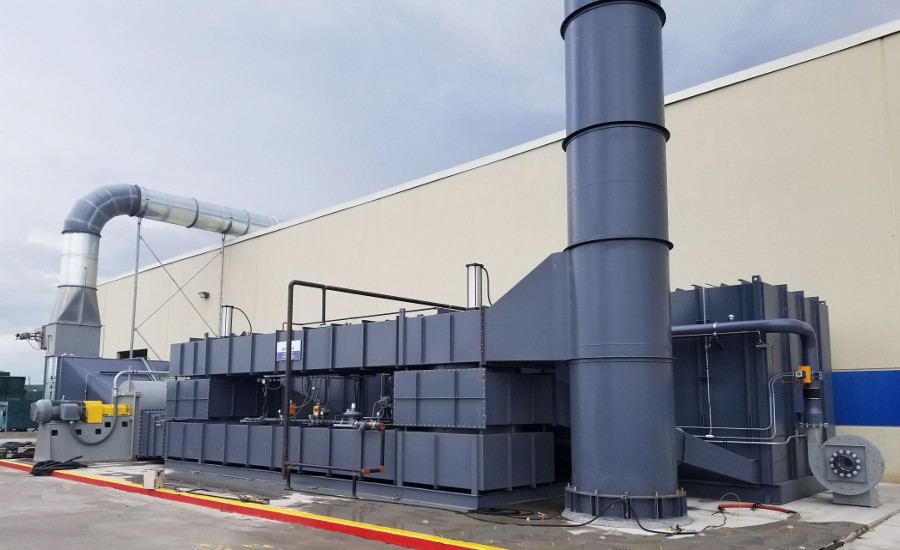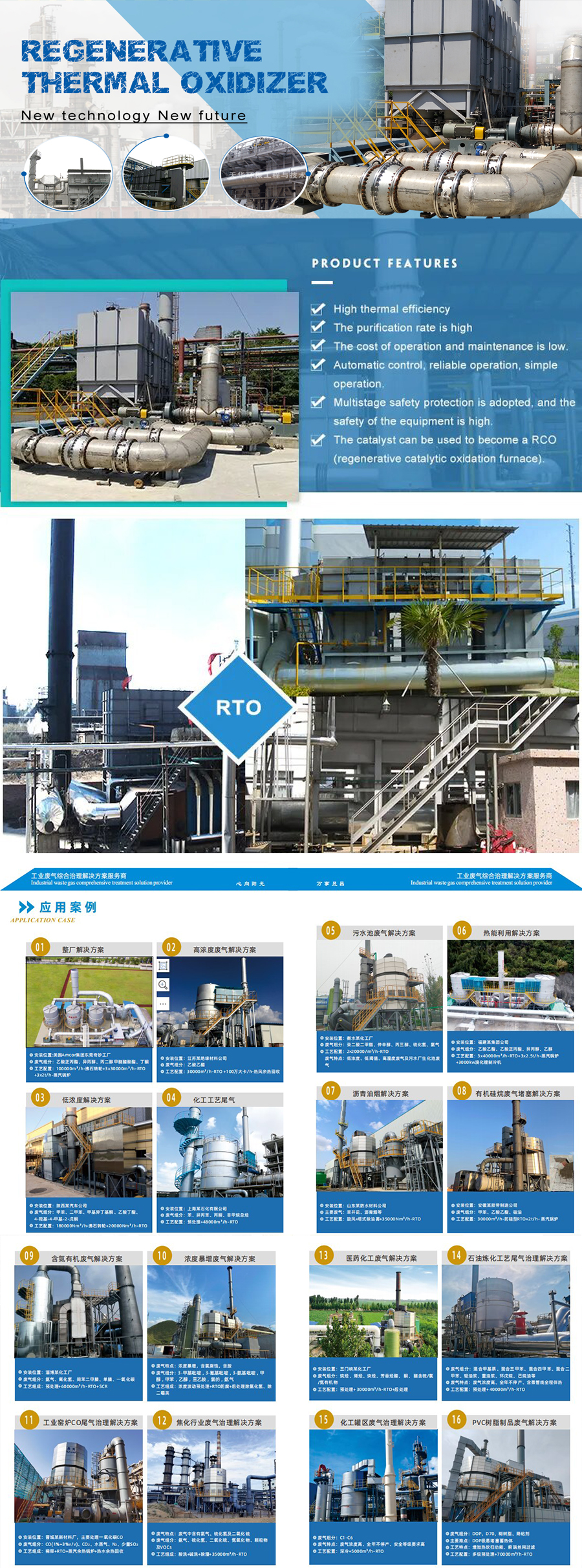Základní informace.
Typ
Nástroj pro monitorování životního prostředí
Značka
Raidsant
Stav
Nový
Čistá účinnost
99.8%
Aplikace
Chemický průmysl
Hlavní funkce
Odstraňování odpadních plynů
Ochranná známka
Raidsant
Přepravní balíček
Film zabalený
Původ
Zhejiang Čína
Popis produktu
HangZhou Raidsant Machinery Co.;,; Ltd.; se specializuje na vývoj a výrobu inovativních práškových chladicích peletizačních strojů a souvisejících průmyslových strojů na zpracování odpadních plynů.; S téměř 20letou historií výroby; máme dobrý trh ve více než 20 provinciích v Číně; a některé z našich výrobků byly vyváženy do Saúdské Arábie, Singapuru, Mexika,; Brazílie,;Španělsko,; Amerika,; Rusko a Korea; atd.;
Specifikace:;
* Kompaktnější než stávající zařízení
* Nízké provozní náklady
* Dlouhá životnost zařízení
* Žádné změny tlaku
Účel:;
Energeticky úsporný systém, který spaluje těkavé organické sloučeniny (VOC); a odpadní plyn využitím tepla; a shromažďuje přes 99.;8 % odpadního tepla výfukových plynů pomocí keramických regeneračních materiálů (katalyzátor); s velkým povrchem a nízkou tlakovou ztrátou.;
Aplikace:;
1.; Proces sušení malby
2.; proces tisku kovů
3.; proces sušení vláken
4.; proces lepicí pásky
5.; proces zpracování odpadu
6.; proces výroby polovodičů
7.; kouř,; cukrářský a pečicí proces
8.; petrochemický proces;
9.; proces výroby léků a potravin;
10.; jiný proces generování VOC
Zásluhy:;
* Kompaktnější než stávající zařízení
* Žádné změny tlaku
* Vysoká míra rekuperace tepla (přes 95 %);
* Perfektní VOC úprava (přes 99.;8%);
* Dlouhá životnost zařízení
* Nízké provozní náklady
* Lze vyrobit v kruhu nebo čtyřúhelníku
Obecné popisy a vlastnosti:;
1.; Princip fungování
Provozní metoda, která neustále mění výboje otáčením rotačního ventilu
2.; Změna procesního tlaku
Žádná změna tlaku, protože směr větru se mění v pořadí rotací rotačního ventilu
3.; Investiční náklady
Přibližně 70 % typu postelí
4.; Instalační prostor
Jedná se o jednu nádobu, takže je kompaktní a vyžaduje méně instalačního prostoru.;
5.; Údržba
Je snadné jej udržovat, protože rotační ventil je jedinou pohyblivou částí.;
Těsnicí část rotačního ventilu je zřídka opotřebovaná, protože se otáčí nízkou rychlostí.;
6.; Stabilita
Žádná rizika v procesu, protože je vždy otevřen, i když má rotační ventil problémy.;
7.; Účinnost léčby
Účinnost ošetření zůstává zachována, protože těsnicí část je zřídka opotřebována, i když je provozována po dlouhou dobu.;
Adresa: No.3, Zhenxin Middle Road, Zóna ekonomického rozvoje, HangZhou, ZheJiang
Typ podnikání: Výrobce/Továrna, Obchodní společnost
Rozsah podnikání: chemikálie, elektrika a elektronika, výrobní a zpracovatelské stroje, bezpečnost a ochrana
Certifikace systému managementu: ISO 9001
Hlavní produkty: peletizátor, vločkovač, pastilátor, granulátor, chemický peletizátor, voc
Představení společnosti: HangZhou Raidsant Machinery Co., Ltd., dříve nazývaná HangZhou Xinte Plastic Machinery Factory, se specializuje na výrobu inovativních strojů na recyklaci plastů. S téměř 20letými zkušenostmi máme dobrý trh ve 20 provinciích v Číně a některé naše výrobky byly exportovány do Indonésie, Ruska a Vietnamu atd. Mezi naše hlavní produkty patří DZ Type Pastillator, linka na recyklaci odpadních pneumatik, Big Caliber Plastic Linka na recyklaci drtičů trubek, kontinuální žíhací stroj na pocínování, QX typ PET, linka na mytí PE a trupu, drtič recyklace plastů SDP s dvojitou kolejnicí, výroba granulí pro řezání za tepla SJ jednotka, produktová řada PVC trubice (cinquefoil), produktová řada PVC Odd-tvarovaný materiál pro dveře a okna, produktová řada granulí ve vodě a Shredder pro plasty a recyklaci. Získali jsme 5 technických patentů.
Naše společnost klade důraz na technickou rekonstrukci, dováží pokročilé technologie z domova i ze zahraničí a neustále vyvíjí nové produkty. Naše zásada je náročná na vysokou kvalitu a nabízíme ty nejlepší produkty. Snažíme se realizovat náš slogan. Spokojenost našich zákazníků je naší věčnou snahou.
Hledáme zahraniční zákazníky nebo agenty. Pokud vás náš návrh zaujal, dejte nám prosím vědět, který z našich produktů vás nebo vaše zákazníky nejvíce osloví. Byli bychom vám velmi vděční, kdybyste nám poskytli nějaké představy o perspektivách trhu pro naše produkty. Doufáme, že se od vás brzy dozvíme příznivé informace! Naším cílem je, abychom si s vámi mohli vybudovat dobrý vztah nyní nebo v blízké budoucnosti. V případě jakýchkoli dotazů nebo požadavků nás prosím neváhejte kontaktovat.
Upřímně vás také vítáme v naší společnosti, abyste s námi diskutovali o podnikání a vyjednávali. Pro další rozšiřování našeho trhu a zákazníků naše společnost vítá zákazníky z domova i ze zahraničí v gestu nové značky na základě zcela nové koncepce řízení – kvalita, čest, služby. Hledáme systém řízení jakosti ISO 90001, abychom splnili požadavky našich zákazníků!

What is the role of heat recovery in a regenerative thermal oxidizer?
Heat recovery plays a crucial role in the operation of a regenerative thermal oxidizer (RTO) by improving its energy efficiency and reducing fuel consumption. The primary function of heat recovery in an RTO is to capture and transfer heat from the treated exhaust gases to the incoming untreated gases, minimizing the need for additional external heating.
Here’s a closer look at the role of heat recovery in an RTO:
- Energetická účinnost: RTOs are designed to achieve high thermal efficiency by utilizing the heat recovery principle. The heat recovery system consists of heat exchangers or beds filled with ceramic media, such as structured ceramic blocks or random ceramic saddles. These beds alternate between the exhaust gas flow and the incoming untreated gas flow.
- Heat Transfer Process: During operation, the hot exhaust gases from the industrial process flow through one bed of the heat exchanger, transferring heat to the ceramic media. The media absorbs the heat, and the temperature of the exhaust gases decreases. Simultaneously, the cooler incoming untreated gas flows through the other bed, where it absorbs the heat stored in the media, preheating the gas before it enters the combustion chamber.
- Bed Switching: The direction of gas flow through the beds is periodically switched using valves or dampers. This switching operation allows the RTO to alternate between different beds, ensuring continuous heat recovery and thermal oxidation of the pollutants. By efficiently recovering and reusing heat from the exhaust gases, the RTO reduces the amount of external fuel needed to maintain the required operating temperature.
- Reduction in Fuel Consumption: The heat recovery mechanism in an RTO significantly reduces the fuel consumption compared to other types of oxidizers. The preheating of the incoming untreated gas stream reduces the energy required to raise the temperature of the gas to the combustion temperature, resulting in lower fuel usage and operational costs.
- Economic and Environmental Benefits: Heat recovery in RTOs offers economic benefits by reducing energy costs and improving the overall sustainability of the facility. By minimizing fuel consumption, heat recovery contributes to a lower carbon footprint and helps meet environmental goals by reducing greenhouse gas emissions associated with the combustion process.
The effectiveness of heat recovery in an RTO depends on factors such as the design of the heat exchanger, the choice of ceramic media, the flow rates of the exhaust gases and incoming untreated gas, and the temperature differential between the two streams. Proper sizing and optimization of the heat recovery system are essential to ensure efficient heat transfer and maximize energy savings.
Overall, heat recovery is a key component in the design of an RTO, allowing for improved energy efficiency, reduced fuel consumption, and environmental sustainability.

Can regenerative thermal oxidizers be remotely controlled and monitored?
Yes, regenerative thermal oxidizers (RTOs) can be remotely controlled and monitored using advanced automation and control systems. Remote control and monitoring capabilities offer several benefits in terms of operational efficiency, maintenance, and troubleshooting. Here are some key points regarding the remote control and monitoring of RTOs:
- Automation Systems: RTOs can be integrated with automation systems that enable remote control and monitoring. These systems utilize programmable logic controllers (PLCs), distributed control systems (DCS), or other similar technologies to manage and optimize the operation of the RTO.
- Remote Control: With remote control capabilities, operators can adjust and modify the operating parameters of the RTO from a central control room or even remotely through secure network connections. This allows for convenient and efficient control of the RTO, making it easier to optimize performance, adjust settings, and respond to changing process conditions.
- Remote Monitoring: Remote monitoring systems enable real-time monitoring of various parameters and performance indicators of the RTO. These systems can provide insights into the operational status, temperature profiles, gas flow rates, pressure differentials, and other critical variables. Operators can access this information remotely, allowing them to assess the system’s performance, identify potential issues, and make informed decisions.
- Alarms and Notifications: Remote monitoring systems can be programmed to generate alarms and notifications based on predefined conditions or thresholds. This allows operators to receive immediate alerts in case of deviations from normal operating conditions or the occurrence of any critical events. Prompt notifications facilitate timely response and troubleshooting, minimizing downtime and potential risks.
- Data Logging and Analysis: Remote control and monitoring systems often include data logging capabilities, which capture historical data regarding the RTO’s operation and performance. This data can be analyzed to identify trends, evaluate efficiency, and optimize the system’s operation over time. It also helps in compliance reporting and maintenance planning.
- Integration with SCADA Systems: RTOs can be integrated with supervisory control and data acquisition (SCADA) systems, which provide a centralized platform for monitoring and controlling multiple processes and equipment within a facility. Integration with SCADA systems allows for a comprehensive overview of the entire operation and facilitates coordinated control and monitoring of various systems.
It is important to ensure that the remote control and monitoring systems are implemented with appropriate cybersecurity measures to protect against unauthorized access or cyber threats. Manufacturers of RTOs often provide guidance and recommendations for implementing secure remote access to their systems.
Overall, the remote control and monitoring capabilities of RTOs enhance operational efficiency, enable proactive maintenance, and facilitate faster response times, contributing to the effective and optimized operation of the air pollution control system.

Regenerative Thermal Oxidizer vs. Thermal Oxidizer
When comparing a regenerative thermal oxidizer (RTO) to a conventional thermal oxidizer, there are several key differences to consider:
1. Operation:
A regenerative thermal oxidizer operates using a cyclical process that involves heat recovery, while a thermal oxidizer typically operates in a continuous mode without heat recovery.
2. Heat Recovery:
One of the primary distinctions between the two systems is the heat recovery mechanism. An RTO utilizes heat exchanger beds filled with ceramic media or structured packing to recover heat from the outgoing gases and preheat the incoming gases, resulting in energy savings. In contrast, a thermal oxidizer does not incorporate heat recovery, leading to higher energy consumption.
3. Efficiency:
RTOs are known for their high destruction efficiency, typically above 95%, which enables effective removal of volatile organic compounds (VOCs) and other pollutants. Thermal oxidizers, on the other hand, may have slightly lower destruction efficiencies depending on the specific design and operating conditions.
4. Energy Consumption:
Due to the heat recovery mechanism, RTOs generally require less energy for operation compared to thermal oxidizers. The preheating of incoming gases in an RTO reduces the fuel consumption required for combustion, making it more energy-efficient.
5. Cost-effectiveness:
While the initial capital investment for an RTO can be higher than that of a thermal oxidizer due to the heat recovery components, the long-term operational cost savings through energy recovery and higher destruction efficiencies make RTOs a cost-effective solution over the lifespan of the system.
6. Environmental Compliance:
Both RTOs and thermal oxidizers are designed to meet emissions regulations and help industries comply with air quality standards and permits. However, RTOs typically offer higher destruction efficiencies, which can enhance environmental compliance.
7. Versatility:
RTOs and thermal oxidizers are both versatile in terms of handling a wide range of process exhaust volumes and pollutant concentrations. However, RTOs are often preferred for applications where high destruction efficiencies and energy recovery are critical.
Overall, the key distinctions between a regenerative thermal oxidizer and a thermal oxidizer lie in the heat recovery mechanism, energy consumption, efficiency, and cost-effectiveness. RTOs offer superior energy recovery and higher destruction efficiencies, making them an attractive option for industries that prioritize energy efficiency and environmental compliance.

editor by CX 2023-10-16
